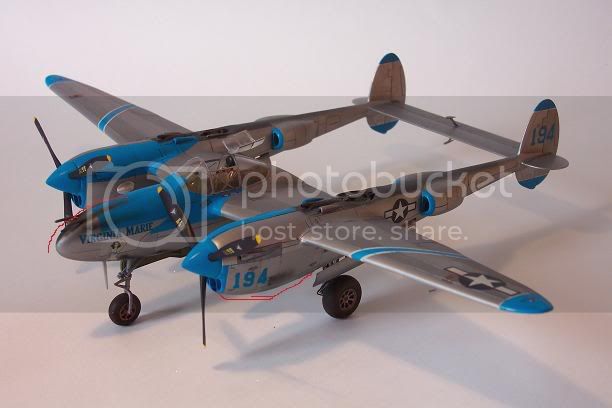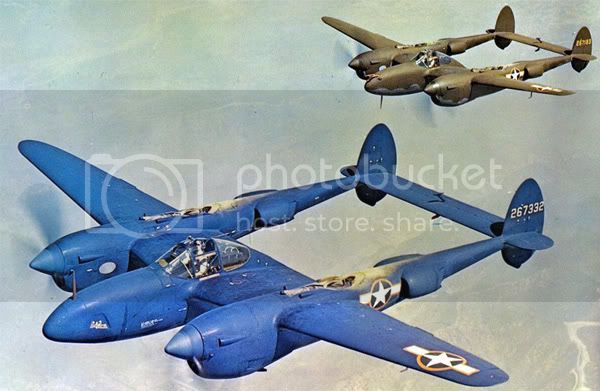Hello everyone,
After analysing all the problems with the Hasegawa 1/48th P-38 kits, it seemed to me from kit photos the Monogram kit might actually be a significantly sounder kit in overall shape, not just easier to align from a constructional point of view...
Any Monogram builders have a similar opinion out there?
Here is my analysis of the problems of the Hasegawa kit (shared by the Academy kit for the engines cowls at least):
In my opinion, but from kit photos alone, the Monogram still has slightly sounder shapes... The cowlings shapes are a little closer and the ratio between the canopy size to the pilot nacelle's overall size might be better too. (Compare the size of the canopy to the lenght of the nose: Hasegawa looks clearly "big-eyed/small nosed", despite the canopy type difference in the photos)
The Hasegawa's main wing is also always warped, misaligning the booms horizontally, and taking the warp out requires breaking the wing leading edges, inside the engines, one up one down, by about 0.7 mm each, or you will have great trouble aligning the booms horizontally...
Unable to work out the warp, Hasegawa seems to have re-engineered the boom "sit" to compensate a little for the warp(!!!!): I remember having to "re-engineer" the boom sit back by carving plastic, in the rear left-left boom corner, after taking out the warp...
A problem most will ignore is that the Hasegawa pilot nacelle does not have enough of an "inverted bulged triangle" cross-section...
See what I mean here for the Hasegawa kit, bearing in mind the canopy type discrepancy:


It would be interesting to see a matching-angle picture of the Monogram kit, whose cowlings have similar problems, but not as severely pronounced it seemed to me (no amount of correcting is enough for the Hasegawa kit to match the real aircraft: You have to carve deep into the kit's wheel wells, well beyond plastic thickness, and add a supernatural amount of putty to get anywhere near the real-life "bulged" appearance you see here...
Note this cowling problem analysis does not apply to the earlier "chinless" variants, whose simpler shapes are likely much more accurate in most kits...
Gaston









